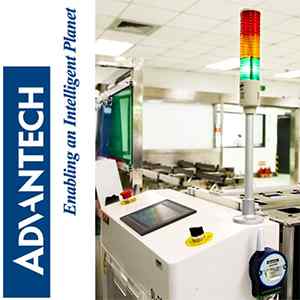Industrial Automation Unleashed: The Best Guide to Mining Machinery & Equipment

Mining operations have undergone a transformative journey over the years, propelled by technological advancements and the integration of industrial automation. This guide delves into the intricate world of mining machinery and equipment, exploring how automation has revolutionized the industry, its benefits, challenges, and future prospects.
The Evolution of Mining Machinery
The history of mining machinery traces back centuries, from manual labor to the introduction of steam-powered machines during the Industrial Revolution. This era marked a significant shift in mining operations, enabling higher productivity and efficiency. Over time, advancements in engineering led to the development of sophisticated mining equipment, including drills, loaders, haul trucks, and crushers, each designed for specific tasks in the mining process.
The Rise of Industrial Automation
The advent of industrial automation in mining heralded a new era of efficiency and safety. Automation technologies such as robotics, artificial intelligence (AI), Internet of Things (IoT), and data analytics have been seamlessly integrated into mining machinery, optimizing performance and reducing human intervention. Automated systems can now perform complex tasks with precision, accuracy, and speed, leading to increased productivity and cost savings for mining companies.
Benefits of Industrial Automation in Mining
The benefits of industrial automation in mining machinery are manifold. One of the primary advantages is enhanced safety for workers. Automated systems can operate in hazardous environments without risking human lives, mitigating the impact of accidents and injuries. Moreover, automation improves operational efficiency by optimizing workflows, reducing downtime, and maximizing resource utilization. It also enables real-time monitoring and predictive maintenance, ensuring equipment reliability and longevity.
Challenges and Considerations
Despite its myriad benefits, industrial automation in mining is not without challenges. One of the major considerations is the initial investment required for implementing automation technologies. Mining companies must weigh the upfront costs against long-term savings and operational improvements. Additionally, there are concerns about job displacement due to automation. However, experts argue that automation creates new roles in maintenance, data analysis, and system management, requiring a skilled workforce with expertise in technology.
Future Prospects and Innovations
The future of mining machinery and equipment lies in continued innovation and integration of cutting-edge technologies. Advancements in AI and machine learning will enable autonomous mining operations, where entire fleets of equipment operate without human intervention. This shift towards autonomy promises increased efficiency, reduced environmental impact, and optimized resource utilization. Furthermore, the development of sustainable mining practices, powered by renewable energy sources and eco-friendly technologies, is a key focus for the industry.
The Role of Data Analytics and IoT in Mining Automation
Data analytics and the Internet of Things (IoT) play pivotal roles in mining automation. IoT devices embedded in mining equipment gather real-time data on performance, maintenance needs, and environmental conditions. This data is then processed using advanced analytics to extract actionable insights. For example, predictive maintenance algorithms can anticipate equipment failures before they occur, allowing for proactive maintenance and minimizing downtime. Additionally, IoT sensors monitor environmental parameters such as air quality and water levels, supporting sustainability initiatives and regulatory compliance.
Integration of Robotics and AI
The integration of robotics and artificial intelligence (AI) has revolutionized mining operations. Robotics, including autonomous vehicles and drones, are used for tasks such as exploration, surveying, and transportation of materials. These robots operate efficiently in challenging terrains and harsh environments, enhancing safety and productivity. AI algorithms analyze vast amounts of data to optimize mining processes, from ore extraction to logistics management. Machine learning algorithms improve equipment performance by learning from operational data and adjusting parameters for optimal efficiency.
Enhancing Environmental Sustainability
Industrial automation in mining is driving efforts towards environmental sustainability. Automation reduces energy consumption and waste generation by optimizing processes and resource utilization. Furthermore, the integration of renewable energy sources such as solar and wind power into mining operations reduces carbon emissions and reliance on fossil fuels. Advanced filtration and treatment technologies minimize the environmental impact of mining activities, ensuring compliance with environmental regulations and fostering responsible mining practices.
Addressing Cybersecurity Concerns
As mining operations become more interconnected through automation and digitalization, cybersecurity has become a critical concern. Mining companies invest in robust cybersecurity measures to protect sensitive data, prevent cyber-attacks, and ensure the integrity of automated systems. This includes implementing encryption protocols, firewalls, intrusion detection systems, and regular security audits. Collaboration with cybersecurity experts and adherence to industry standards and best practices are essential to safeguarding mining operations against cyber threats.
Empowering the Workforce through Training and Upskilling
The adoption of industrial automation in mining requires a skilled workforce capable of managing automated systems and leveraging data-driven insights. Mining companies invest in training and upskilling programs to empower their employees with the knowledge and expertise needed for automation technologies. This includes training in equipment operation, maintenance of automated systems, data analytics, and cybersecurity awareness. By investing in their workforce, mining companies ensure a smooth transition to automation and create opportunities for career advancement in the industry.
Collaboration and Knowledge Sharing
The evolution of mining machinery and equipment through industrial automation is driven by collaboration and knowledge sharing within the industry. Mining companies collaborate with technology providers, research institutions, and regulatory bodies to exchange best practices, share technological advancements, and address common challenges. This collaborative approach fosters innovation, accelerates the adoption of automation technologies, and contributes to the continuous improvement of mining operations worldwide.
Conclusion
Industrial automation has unleashed a new era of possibilities for mining machinery and equipment. From enhanced safety and operational efficiency to sustainable practices and autonomous operations, the benefits are undeniable. As mining companies embrace automation, they pave the way for a more efficient, productive, and sustainable future for the industry.







